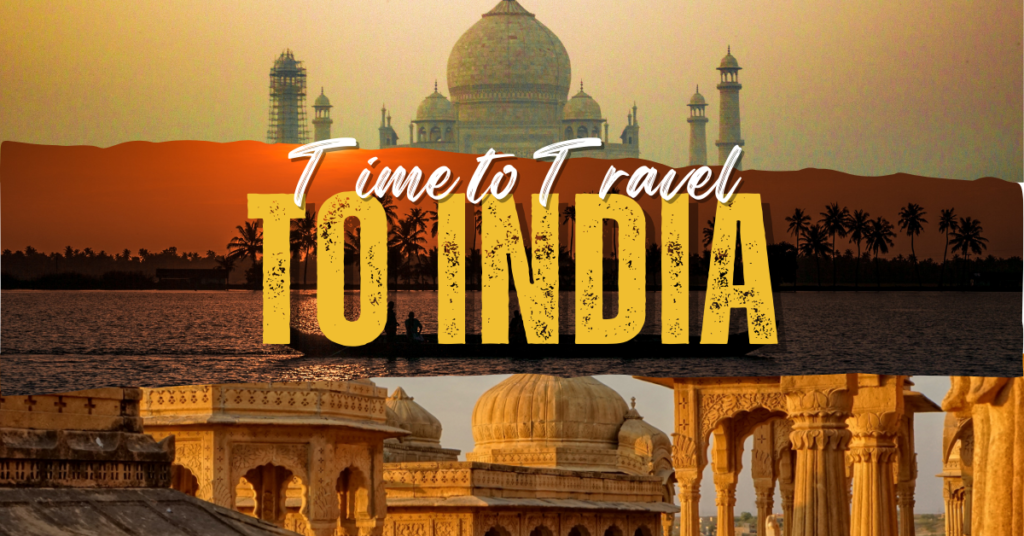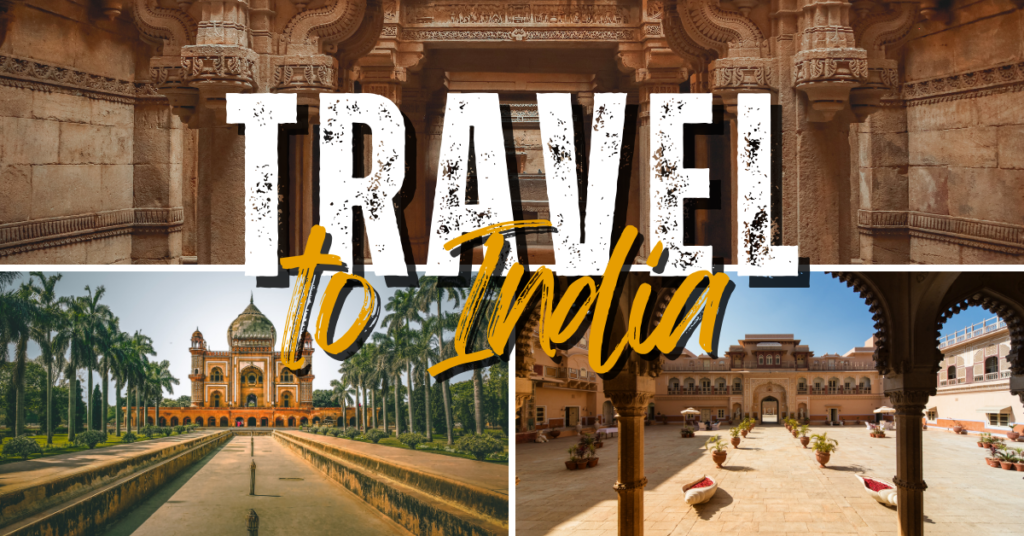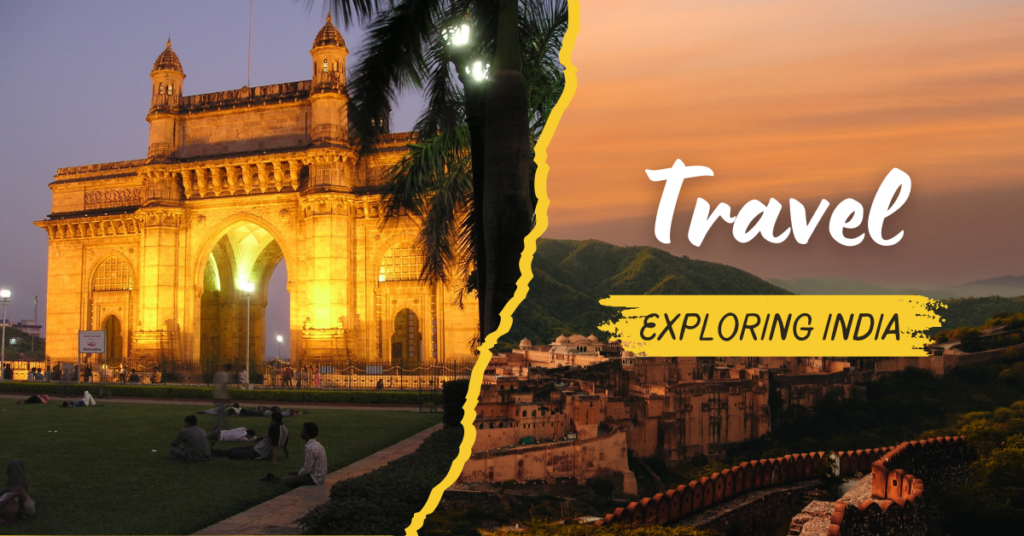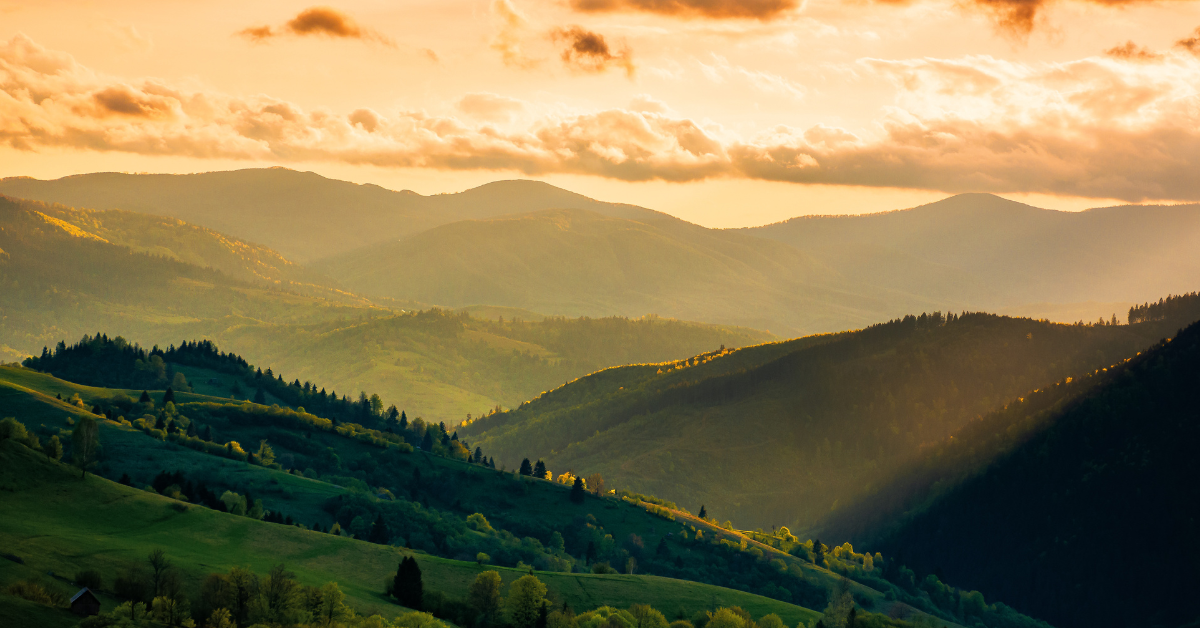India, a vibrant tapestry woven with rich cultural heritage, breathtaking landscapes, and ancient traditions, beckons travelers from around the globe to explore its myriad wonders. From the bustling streets of Delhi, where the aroma of street food mingles with the sounds of honking rickshaws, to the serene backwaters of Kerala, where time seems to stand still, each destination offers a unique glimpse into the country’s diverse soul. This blog post invites you on a captivating journey through some of the best places in India, where you’ll encounter magnificent forts, lush greenery, and warm, welcoming communities. Whether you’re drawn to the spiritual serenity of Varanasi, the architectural marvels of Jaipur, or the pristine beaches of Goa, join us as we uncover the hidden gems and timeless experiences that make India a land of endless exploration and discovery. Get ready to immerse yourself in a kaleidoscope of culture, nature, and heritage that will leave you enchanted long after your journey ends.
1. Exploring India’s Cultural Heritage: Must-Visit Cities

India is a tapestry of diverse cultures, traditions, and histories, woven together to create a vibrant mosaic that beckons travelers from around the globe. Exploring the must-visit cities in India offers an immersive experience of the country’s rich cultural heritage, where every corner tells a story and every monument stands as a testament to its glorious past.
Start your journey in
Delhi, the heart of India, where ancient history meets modernity. The bustling streets are lined with architectural marvels like the Red Fort and Humayun’s Tomb, both UNESCO World Heritage Sites, showcasing Mughal grandeur. Wander through the narrow lanes of Old Delhi to experience the intoxicating aroma of street food and the buzz of local markets, where you can find everything from intricate handicrafts to vibrant textiles.
Next, head to
Jaipur, the Pink City, known for its stunning palaces and forts that echo the tales of Rajput royalty. The Amer Fort, with its majestic architecture and panoramic views, is a must-visit, while the City Palace offers a glimpse into royal life with its museums and courtyards. Don’t forget to explore the bustling bazaars, where artisans sell traditional jewelry, pottery, and block-printed fabrics that reflect the city’s artistic heritage.
A trip to India wouldn’t be complete without visiting
Varanasi, one of the oldest continually inhabited cities in the world. Situated on the banks of the Ganges, Varanasi is a spiritual hub where the sacred river plays a central role in Hindu rituals. Witness the mesmerizing Ganga Aarti ceremony at Dashashwamedh Ghat as the sun sets, illuminating the night with flickering lamps and resonating chants. The labyrinthine streets, dotted with ancient temples and ghats, invite exploration and introspection.
Finally, make your way to
Mysore, famous for its royal heritage and grand architecture. The Mysore Palace, with its intricate carvings and sprawling gardens, is an exquisite example of Indo-Saracenic architecture. Every year, the city transforms during the Dasara festival, showcasing vibrant processions and cultural performances that celebrate its rich traditions.
Each of these cities offers a unique lens through which to view the confluence of history, art, and spirituality that defines India. As you traverse through these vibrant locales, you’ll not only be enchanted by their beauty but also by the warm hospitality and rich stories of the people who call them home. Prepare to be captivated by India’s cultural heritage and the unforgettable experiences that await you in these must-visit cities.
2. Nature’s Wonders: National Parks and Scenic Landscapes

India is a treasure trove of natural wonders, where breathtaking landscapes and diverse ecosystems converge to create some of the world’s most spectacular national parks and scenic vistas. From the majestic Himalayas in the north to the lush backwaters of Kerala in the south, the country offers an array of experiences for nature lovers and adventure seekers alike.
One of the crown jewels of India’s natural heritage is Jim Corbett National Park, nestled in the foothills of the Himalayas. This park is not only the oldest national park in India but also a vital sanctuary for the majestic Bengal tiger. As you traverse its lush forests, you might catch glimpses of diverse wildlife, including elephants, leopards, and various species of birds, all set against a backdrop of stunning mountain scenery.
Another gem is Kaziranga National Park in Assam, renowned for its population of the Indian one-horned rhinoceros. This UNESCO World Heritage Site features sprawling grasslands and wetlands, where you can take thrilling jeep safaris or serene elephant rides. The park’s vibrant flora and fauna create a symphony of sights and sounds, offering an unforgettable experience for visitors.
For those drawn to coastal beauty, the Andaman and Nicobar Islands present a paradise of white sandy beaches and crystal-clear waters. The Ritchie’s Archipelago and Mahatma Gandhi Marine National Park showcase coral reefs that are teeming with marine life, making it a perfect spot for snorkeling and scuba diving. Imagine swimming alongside colorful fish and exploring vibrant coral gardens in a tranquil setting—it’s an adventure that truly reconnects you with nature.
In the heart of Rajasthan, the Thar Desert offers a different kind of allure, with its sweeping sand dunes and captivating sunsets. The Sam Sand Dunes near Jaisalmer provide a unique opportunity to experience desert life, including camel rides and traditional folk performances that celebrate the region’s rich culture.
Finally, a visit to the Western Ghats, a UNESCO World Heritage Site, reveals lush mountain ranges, cascading waterfalls, and breathtaking vistas. The hill stations of Munnar and Ooty are perfect retreats, where tea gardens stretch as far as the eye can see and the cool climate provides a refreshing escape from the heat.
Each of these national parks and scenic landscapes offers a glimpse into India’s incredible biodiversity and rich ecological heritage. Whether you’re hiking through dense forests, exploring serene lakes, or soaking in panoramic views, the natural wonders of India promise a journey that nourishes the soul and leaves you in awe of the beauty that our planet has to offer.
3. Architectural Marvels: Forts, Palaces, and Temples

India, a land of diverse cultures and rich history, is dotted with architectural marvels that reflect the grandeur of its past. From majestic forts that tell tales of valor to opulent palaces that showcase royal lifestyles, and serene temples that resonate with spirituality, the architectural landscape of India is nothing short of breathtaking.
As you traverse the country, you’ll encounter the imposing forts of Rajasthan, such as the majestic Mehrangarh Fort in Jodhpur, perched high above the blue city, and the Amber Fort, with its intricate mirror work and stunning gardens. These formidable structures not only served as defense mechanisms but also as vibrant centers of culture and administration during their prime.
The palaces of India, like the ethereal City Palace in Udaipur, offer a glimpse into the lives of the erstwhile maharajas. Adorned with exquisite courtyards and intricate frescoes, these royal residences are a testament to the artistic brilliance of their time. The fusion of Mughal, Rajput, and European architectural styles creates a visual feast that enchants visitors from all over the globe.
Temples, too, hold a significant place in India’s architectural heritage. The intricately carved Brihadeeswarar Temple in Thanjavur, a UNESCO World Heritage Site, showcases the brilliance of Dravidian architecture. Its towering vimana and detailed sculptures narrate stories from Hindu mythology, inviting pilgrims and tourists alike to bask in their spiritual aura.
As you immerse yourself in the rich tapestry of India’s architectural marvels, each structure whispers stories of love, ambition, and devotion, inviting you to explore the depths of its cultural roots. Whether you are wandering through the hallowed halls of a palace, climbing the ramparts of a fort, or marveling at the serene beauty of a temple, you’ll find that these architectural wonders not only capture the essence of India’s heritage but also inspire a profound appreciation for its timeless beauty.
4. Culinary Delights: A Taste of Regional Flavors

India’s culinary landscape is as diverse and vibrant as its culture, offering a rich tapestry of flavors that vary from one region to another. Each state boasts its own unique culinary traditions, deeply rooted in local ingredients, history, and cultural influences. Embarking on a gastronomic journey through India is not merely a feast for the palate but an exploration of the country’s identity through its food.
In the north, one might find themselves savoring the hearty, spice-laden dishes of Punjab, where butter chicken and sarson da saag are staples that reflect the region’s agricultural bounty. Journeying south, the tangy flavors of Kerala’s seafood curry and the comforting warmth of a banana leaf meal evoke the lush landscapes and coastal culture of the region.
As you move east to Bengal, the delicate flavors of fish prepared with mustard oil and the sweetness of traditional desserts like rasgulla and sandesh celebrate the rich cultural tapestry of this region. Meanwhile, the vibrant streets of Mumbai entice with the aroma of vada pav and the sweet, milky goodness of kulfi, perfectly capturing the city’s bustling spirit.
In the west, the fiery curries of Gujarat showcase the region’s vegetarian ethos, while Maharashtra’s delectable street food scene, featuring dishes like pav bhaji and bhel puri, tells a story of urban life. Each bite is an invitation to delve deeper into the customs and traditions that shape the dishes and their presentations.
Notably, many regions embrace their local herbs and spices, which play a crucial role in defining their culinary identities. From the fragrant saffron of Kashmir to the earthy spices of Rajasthan, the ingredients used in these dishes tell a story of the land and its people.
As you traverse through India, each meal becomes a celebration of the region’s heritage, a moment to engage with local communities, and an opportunity to experience the warmth of Indian hospitality. Whether dining at a street stall or indulging in a traditional home-cooked meal, the culinary delights of India are sure to leave an indelible mark on your heart and palate, making your journey through culture, nature, and heritage truly unforgettable.
5. Spiritual Journeys: Sacred Sites and Pilgrimage Destinations

India, renowned for its rich tapestry of spirituality, offers a multitude of sacred sites and pilgrimage destinations that beckon travelers seeking deeper meaning and connection. From the majestic peaks of the Himalayas to the serene banks of ancient rivers, each location is steeped in history, culture, and profound religious significance.
One cannot embark on a spiritual journey in India without mentioning the revered city of Varanasi. Often regarded as the spiritual heart of the country, Varanasi is one of the oldest inhabited cities in the world. Pilgrims flock to its ghats to perform rituals, bathe in the sacred Ganges River, and witness mesmerizing Ganga Aarti ceremonies at sunset. The air is thick with a sense of devotion, as the sounds of chanting and the aroma of incense create an atmosphere that elevates the soul.
Heading south, the vibrant town of Rishikesh, nestled amidst the foothills of the Himalayas, serves as a hub for yoga enthusiasts and spiritual seekers alike. Known as the “Yoga Capital of the World,” Rishikesh offers tranquil ashrams, meditation retreats, and the opportunity to partake in the ancient practice of yoga along the banks of the Ganges. The iconic Laxman Jhula bridge, adorned with colorful prayer flags, stands as a symbolic gateway to enlightenment.
For those drawn to the grandeur of temples, the intricate architecture of Khajuraho is a must-visit. This UNESCO World Heritage site is famous for its stunning temples adorned with exquisite sculptures that celebrate love, spirituality, and the divine. Each temple tells a story through its carvings, inviting visitors to reflect on the transcendent nature of existence.
In the western part of India, the city of Ajmer hosts the revered Ajmer Sharif Dargah, a pilgrimage site for those seeking blessings and solace. The shrine of the Sufi saint Khwaja Moinuddin Chishti draws devotees from diverse backgrounds, highlighting the inclusive nature of spirituality in India. The atmosphere here is one of unity, where people come together to pray and seek guidance.
Finally, no spiritual journey is complete without a trip to the sacred city of Amritsar, home to the Golden Temple—the holiest shrine of Sikhism. The shimmering gold façade of the temple reflects in the serene waters of the Amrit Sarovar, creating a picturesque scene that captivates the heart. Visitors are welcomed with open arms to partake in the community kitchen, where thousands are fed daily, embodying the Sikh principle of selfless service.
Each of these sacred sites offers a unique glimpse into India’s spiritual landscape, inviting travelers to explore diverse beliefs, practices, and traditions. Whether you seek enlightenment, inner peace, or a deeper understanding of yourself, these pilgrimage destinations provide the perfect backdrop for a transformative experience. As you traverse this vibrant land, you will undoubtedly find that the journey itself is as significant as the destination.
6. Tips for Traveling in India: What to Know Before You Go

Traveling in India is an adventure like no other, filled with vibrant cultures, breathtaking landscapes, and rich heritage. However, to make the most of your journey, it’s essential to be well-prepared. Here are some valuable tips to help you navigate the diverse tapestry of this incredible country.
Research Your Destinations: India is vast and varied, with each region offering unique experiences. From the snow-capped peaks of the Himalayas to the serene backwaters of Kerala, understanding the geographical diversity will help you choose destinations that align with your interests. Take the time to read about local customs, traditions, and any festivals that might be taking place during your visit.
Respect Local Customs and Traditions: India is a land of rich traditions and cultural nuances. Familiarize yourself with local etiquette, such as appropriate dress codes, especially when visiting temples and religious sites. Showing respect for the local customs will not only enrich your experience but also endear you to the locals.
Stay Hydrated and Eat Wisely: India’s climate can vary, and staying hydrated is crucial, especially in the heat of summer. Always drink bottled water and be mindful of street food. While some street vendors offer delicious treats, it’s advisable to opt for food from reputable establishments to avoid digestive issues.
Learn a Few Local Phrases: While many people in India speak English, learning a few basic phrases in the local language can go a long way. Simple greetings or expressions of gratitude in Hindi, Tamil, Bengali, or any other regional language can help break the ice and foster connections with locals.
Plan Your Transportation: India’s extensive transportation system can be overwhelming. Consider booking your train tickets in advance through the Indian Railways website or using apps for local transportation like Ola or Uber in urban areas. Hiring a reliable driver for longer journeys can add comfort and ease to your travels.
Be Open-Minded and Flexible: India can be both exhilarating and challenging, and things may not always go as planned. Embrace the chaos and remain flexible with your itinerary. Some of the best experiences often come from unexpected moments, whether it’s a spontaneous detour to a local festival or an impromptu conversation with a fellow traveler.
By keeping these tips in mind, you’ll be better equipped to immerse yourself in the beauty and complexity of India. Prepare for a journey that touches your heart and broadens your horizons as you discover the best places in this enchanting country!





